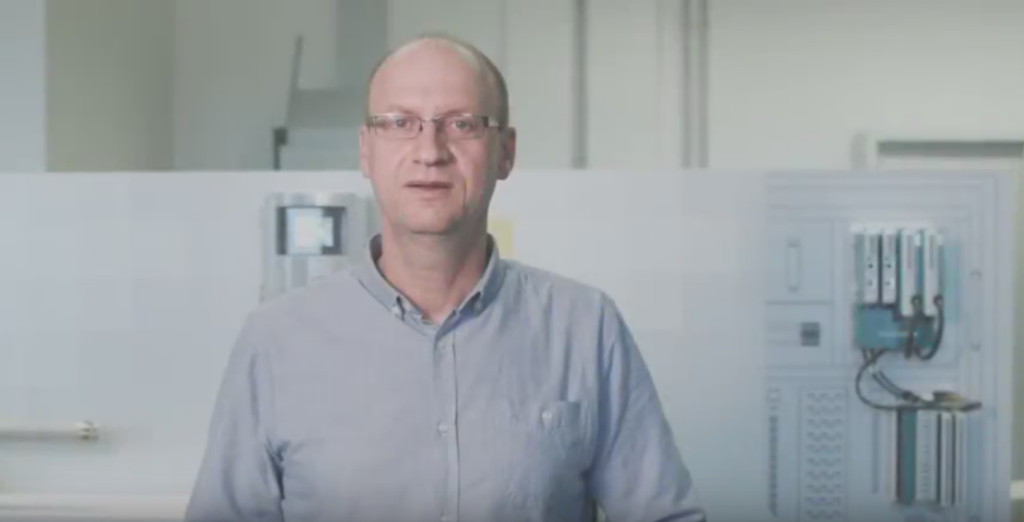PAT demonstrator – PAT and NOA are ideal partners
No, PAT demonstrators don’t take to the streets to demonstrate for the rights of process analytical instruments – although, on second thoughts…
The integration of field devices into NOA (NAMUR Open Architecture) has already been successfully demonstrated on a number of occasions, for example by TU Dresden and Yokogawa at the NAMUR Annual General Meeting in 2017. So why should we now want to do the same with process analytical technology (PAT)?
Process analytical technology – your GPS guide to the process
Whereas field measurement technology establishes and monitors the necessary process conditions, process analytical technology supplies information on what is actually going on in the process. The P&I abbreviation which was customarily used for analytical measurements in the past, e.g. QIC (nowadays – unsurprisingly – AIC for Analyzer Indication Control) reflected this situation very accurately. The Q stood for quality, in other words a continuous quality measurement. And that’s precisely what PAT does: it knows not only the product quality and quantity but also the process sequence and can intervene – automatically – at any time. I call it your GPS guide to the process. If you’ve ever arrived too late at the airport because you didn’t have access to a GPS, or if you’ve ever “got lost” in the process, you’ll know exactly what I mean. Today, information is circulating claiming that a return on investment or a payback period of six to twelve months is realistic for certain processes with a PAT system.
There’s a price to be paid
Analytical systems which determine valuable information online, like the concentration of several ingredients in a mixture of substances, tend to be rather complex. They may require auxiliary materials or possibly a sample conditioning system. Validation, calibration and maintenance of the overall system are more complicated than, say, with a temperature sensor. However, analytical systems generally also supply more data and information on the condition of a device and the quality of the analysis results. That’s good news for whoever has to monitor analysis data quality and good news for the PAT department that is held to account. At the same time, it can make the systems rather awkward (for want of a better word) to integrate into the control system.
That’s where NOA comes in
As the data supplied by process analytical technology becomes more abundant – and more complex – and changes become necessary as a result of the experiences gained, an extra piece of intelligence is called for. The analyzer is not the right place for this because the type of intelligence is also determined by the process. More and more data means a shortage of space in the control system although changes are allowed there, they’re not exactly popular. A separate software program such as an app rids us of these chains and gives us the flexibility we need to make specific adaptations.
Is PAT just a rare exception?
No, PAT is not an exception. pH sensors, for instance, are “bread and butter” sensors for liquid analysis in the chemical industry. The same goes for many other sectors, too, where the hundreds – if not thousands – of measuring points installed in large plants represent an excellent example of how analysis sensors can be integrated into NOA.
The TU Dresden / Yokogawa PAT demonstrator
A PAT demonstrator with an analog pH sensor has now been realized by TU Dresden in the framework of a research assignment. The aim of the analog sensor is to show how, even with standard brownfield equipment, a sensor with simple HART communication can be integrated into NOA, with all the benefits this entails. The sensor features a cleaning device that cleans it automatically at fixed intervals. Both the defined pH of the cleaning solution and the time response of the sensor after cleaning permit statements regarding the sensor’s condition as well as any necessary maintenance (usually only during normal servicing by the maintenance technician). In the system described here, this data is available more or less continuously. Even without a cleaning device, the continuous evaluation of data such as the impedance of a reference electrode enables a constant awareness of the sensor’s condition.
The reward for your efforts
NOA based systems offer numerous benefits:
- Programming of the cleaning cycles is simplified during the commissioning phase because all essential data is available.
- If urgent action is needed, this is communicated to the operator and suitable measures recommended. The PAT department has access to the data and can provide immediate support where necessary.
- The PAT department can analyze the data offline and determine the potential for optimization, e.g. in connection with maintenance.
- Render unto the operator the things that are the operator’s (forgive me for waxing lyrical!). Render unto the PAT specialist the things that are the PAT specialist’s.
- Trust in the sensor’s reliability increases owing to the quasi-continuous supply of data and the high level of availability and up-to-dateness – the PAT department can even see values while the sensor is “on hold”.
- There are fewer undetected errors.
- The system’s enormous flexibility makes it easier adapt to different applications.
It’s not enough for technical systems simply to communicate
Efficient cooperation between the plant, the control system and the PAT specialists is crucial to the success of these new opportunities. In the end, it’s all a question of communication. From now on, it’s up to the departments to show that they’re capable of communicating. As far as process analytical technology is concerned, that already works on the technical level – as the PAT demonstrator demonstrates most impressively.




